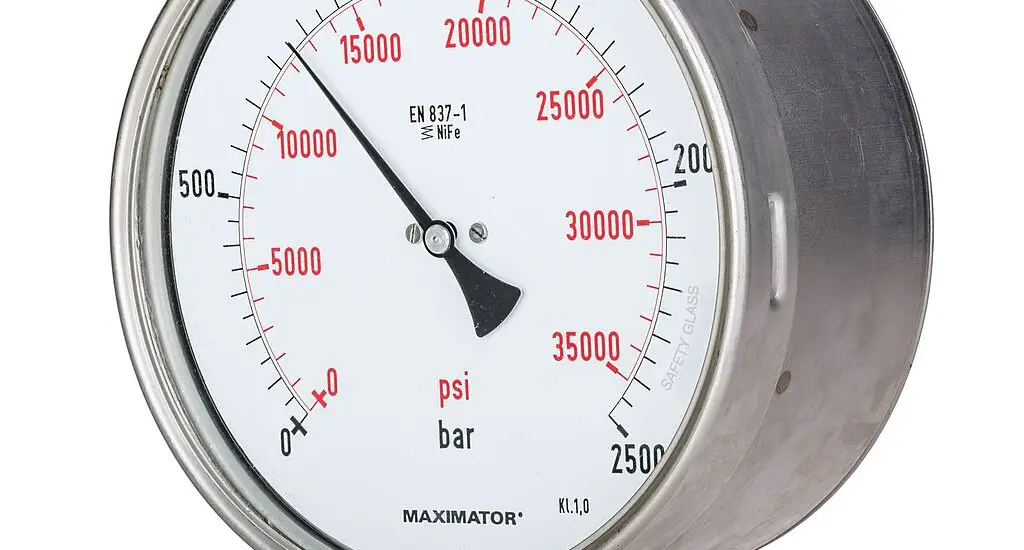Refrigerator compressor vacuum pressure stands as a pivotal aspect for ensuring optimal functionality of your cooling unit. This detailed guide will provide you with a thorough understanding of its role, its importance, and how to measure it accurately for your appliance’s optimal health.

What is Refrigerator Compressor Vacuum Pressure?
At its core, refrigerator compressor vacuum pressure refers to a specific state of pressure inside your refrigerator’s compressor. Every refrigerator has a closed system where a refrigerant circulates to help maintain a cool temperature inside.
The compressor plays a pivotal role in this process by compressing the refrigerant into a high-pressure state and then allowing it to expand, which is where the cooling effect comes from. When the compressor is in a vacuum state, it means the pressure inside is below the regular atmospheric pressure.
This isn’t a malfunction or a problem. On the contrary, it’s a designed state that ensures the refrigerant can expand adequately after compression, ensuring efficient cooling. Without this vacuum state, the refrigerant wouldn’t be able to circulate and change states effectively, leading to decreased cooling capabilities.
Why is Measuring Refrigerator Compressor Vacuum Pressure Important?
Imagine driving a car without ever checking the tire pressure. While the car might run, you wouldn’t know if the tires are over-inflated, under-inflated, or if there’s a potential issue lurking. Similarly, the vacuum pressure in the refrigerator compressor serves as a gauge for its health.
If the vacuum pressure is too high or too low, it can signal several issues. A deviation from the norm might mean there’s a leak in the system, letting refrigerant escape, which can lead to reduced cooling efficiency. It might also mean there’s a blockage somewhere, preventing the refrigerant from flowing freely.
Furthermore, inconsistencies in pressure can put undue strain on the compressor, leading to increased wear and tear and potentially shortening its lifespan. Regularly monitoring this pressure ensures your refrigerator operates at peak efficiency, prolonging its life and ensuring food and beverages are stored at the right temperature.
Check out these other articles…
5 Signs of Refrigerator Compressor Failure: Ultimate Guide
RV Refrigerator Compressor Not Coming On: Easy Steps to Fix
Everchill RV Refrigerator Compressor Not Working: How to Fix
Norcold RV Refrigerator Compressor Not Turning On: Easy Fix
Refrigerator Compressor Runs for 5 Seconds: Quick Solutions
Step-by-Step Guide to Measuring Refrigerator Compressor Vacuum Pressure
Ensure Safety First: It’s paramount that before touching any electrical appliance, you disconnect it from its power source. This safety step helps in preventing electrical mishaps and keeps you safe during the process.
Locate and Access the Compressor: The compressor is essentially the heart of your refrigerator, responsible for the circulation and compression of the refrigerant. You’ll typically find it at the back bottom of your unit. It’s a metallic, cylindrical, or boxy component, generally with pipes or tubes attached to it.
Identify the Service Port: Before attaching the vacuum gauge, you need to find the service port on the compressor. This port is a small valve-like structure, typically capped, and it’s where professionals connect various tools to service the refrigerator.
Connect the Vacuum Gauge: Using the hose that comes with your vacuum gauge, make a secure connection between the gauge and the service port. Ensure that there are no air leaks because even a small leak can skew your readings.
If you don’t have a vacuum gauge, you can get this Refrigeration Digital Manifold Gauge from Amazon.
Turn on the Vacuum Gauge and Take the Reading: Activate the vacuum gauge. Allow it a few seconds to stabilize and then note down the reading, usually measured in ‘inches of mercury’ or ‘inHg’.
Compare and Analyze: Once you have your reading, refer to your refrigerator’s user manual or manufacturer’s recommendations. Each refrigerator model might have a slightly different optimal vacuum pressure range. If your readings fall outside this range, it suggests that there might be an issue that requires professional attention.
Disconnect and Store Safely: After taking the reading, carefully disconnect the vacuum gauge, replace the cap on the service port, and store the gauge in a safe location for future use.